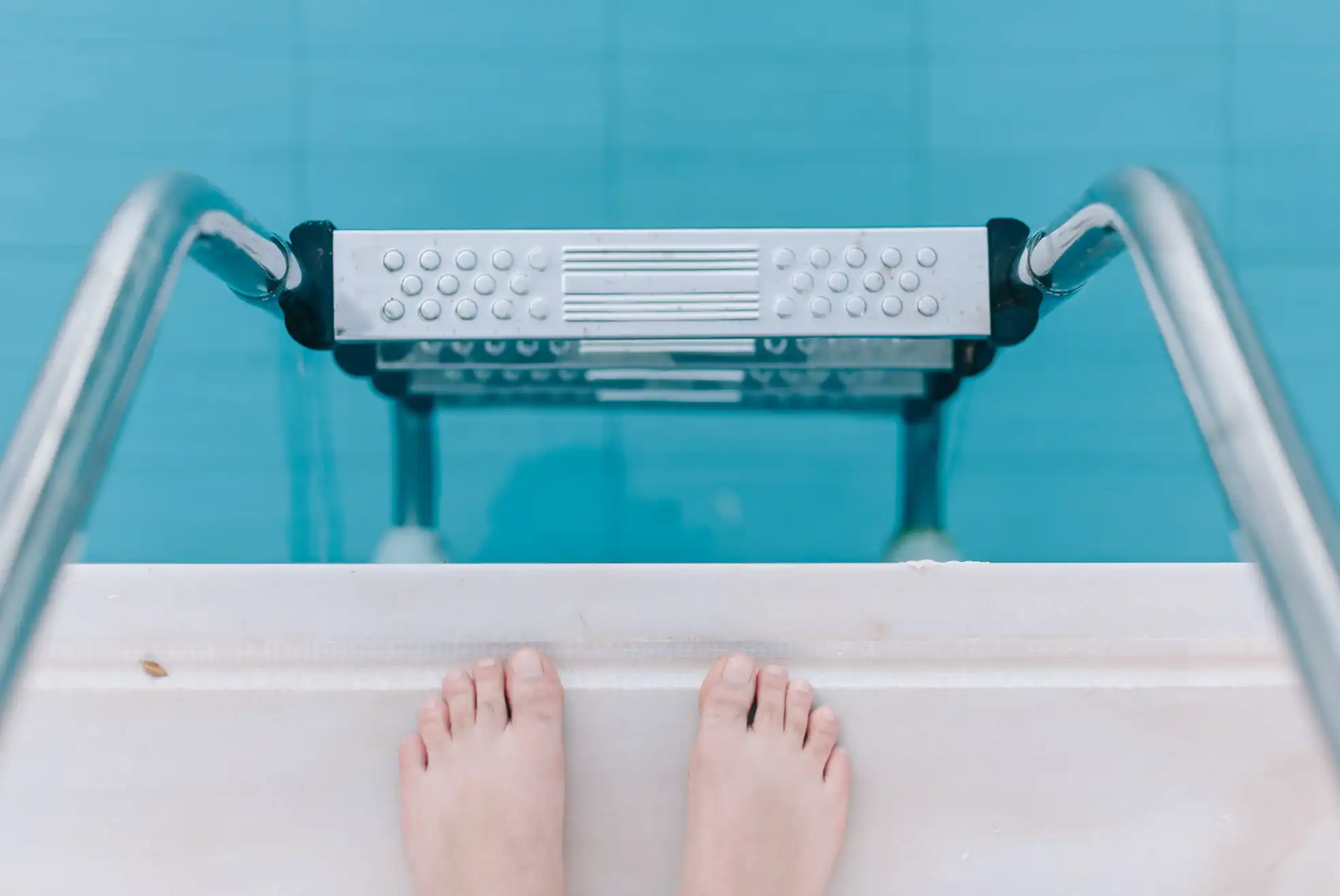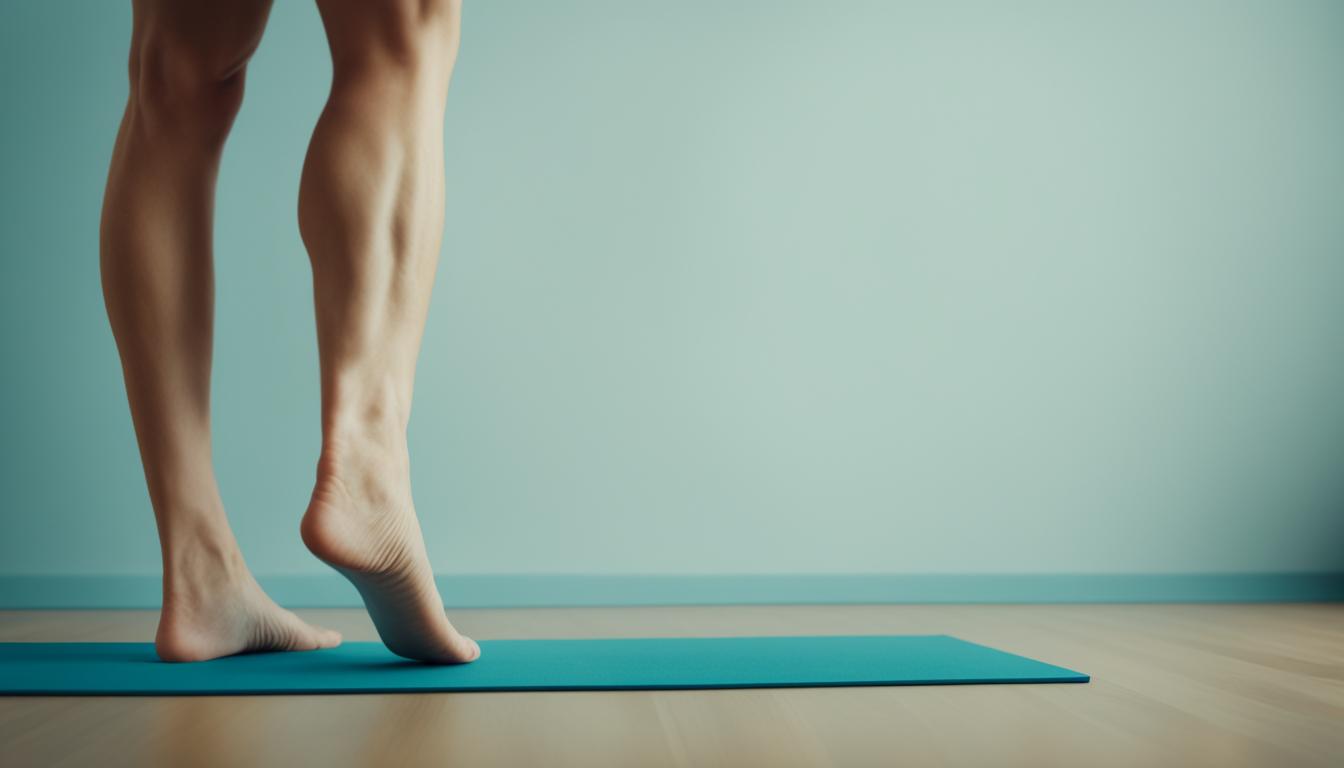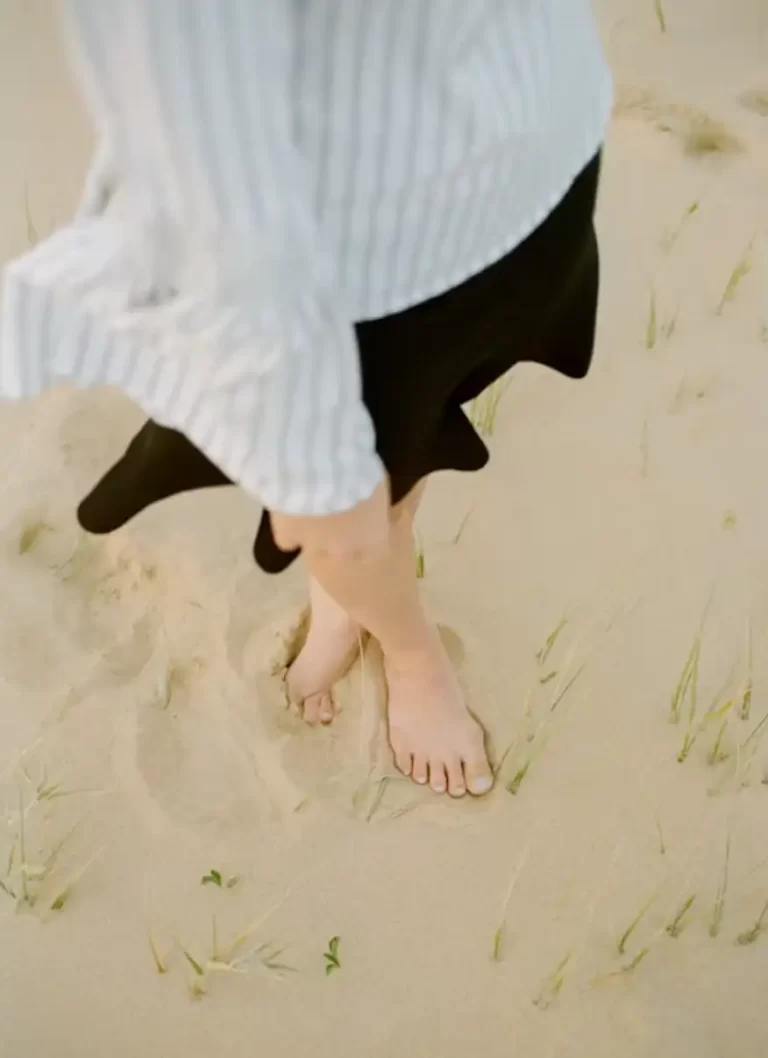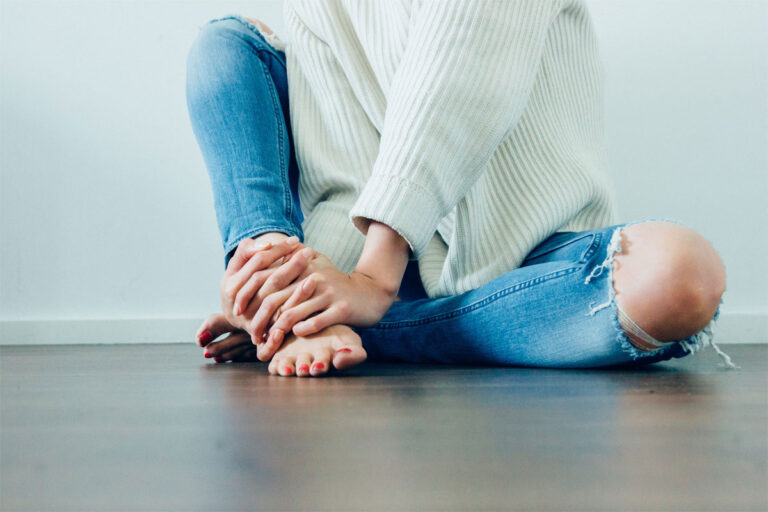Are You Born With Flat Feet? What We Know About It
Flat feet, or fallen arches, mean your foot’s bottom fully touches the ground. You might have this from birth or get it later. But are you really born with flat feet? Let’s look into what causes, the signs, and how to treat flat feet. This will help us know if you can inherit it or if it happens as you grow.
Key Takeaways
- Flat feet can be present from birth or develop later in life due to a variety of factors.
- Many babies and toddlers have flat or low arches, which is a normal part of foot development.
- Common causes of adult-onset flat feet include injury, medical conditions, and aging.
- Symptoms of flat feet can include pain, difficulty with balance, and postural issues.
- Treatment options range from conservative methods to specialized footwear and surgical interventions.
What Are Flat Feet?
Flat feet happen when the feet’s arches don’t form or fall, making the whole foot touch the ground. Many reasons may cause this, like family history, injuries, or health issues.
Understanding the Anatomy of Flat Feet
Feet usually have an arch that helps distribute weight and gives balance. With flat feet and arches, this structure is missing, so the full sole of the foot touches the ground.
The Difference Between Flexible and Rigid Flat Feet
Flat feet come in two main types: flexible and rigid. Flat feet in adults are either:
| Flexible Flat Feet | Rigid Flat Feet |
|---|---|
| The arch is visible when the foot is not bearing weight, but disappears when standing or walking. | The arch is absent even when the foot is not bearing weight, and the foot remains flat in all positions. |
| This is more common and often develops during childhood as the foot muscles and ligaments strengthen. | This type is less common and can be caused by injury, arthritis, or other underlying medical conditions. |
It’s crucial to know the differences between flexible and rigid flat feet for proper treatment.
Are You Born With Flat Feet?
Many people are born with flat feet because the arches of their feet don’t fully develop until later. Newborns and toddlers often start with flat or low arches. This happens as their tissues and bones are still growing, and the arches are not yet complete. The arches might not fully form until the child is 5-6 years old.
Flat Feet in Babies and Toddlers
Babies and toddlers often have flat feet. This is because their feet are still growing. It’s not usually a problem because the arches will start to form as they get older. But if the flat feet continue after toddler years or cause pain, talking to a doctor is a good idea.
Developing Arches as Children Grow
As children grow, their feet change and the arches start to form. Around 5-6 years old, their arches should be developed. If flat feet are still an issue after this, seeing a doctor is wise. They can check for any problems and make sure the feet develop well.
Common Causes of Adult Flat Feet
Some people are born with flat feet. But, others might get it later in life due to many reasons. Common causes include injuries, some medical problems, and disorders. These things can flatten the arch of your foot.
Injury or Trauma to the Feet or Ankles
If you have an accident, fall, or hurt your feet or ankles, they might flatten. This is because the arch can collapse from damage to its supporting parts.
Certain Medical Conditions and Disorders
Some health issues can also make your feet flat. These are:
| Condition | Description |
|---|---|
| Obesity | Being overweight can stress your feet, making the arches fall. |
| Arthritis | Arthritis can hurt your joints and weaken muscles that support the arch. |
| Diabetes | Diabetes can damage nerves and weaken muscles. This can cause flat feet. |
| Posterior Tibial Tendon Dysfunction (PTTD) | PTTD affects the tendon that supports the arch, making the arch fall. |
It’s crucial to treat the root cause of adult flat feet. It could be an injury or a health condition. Managing this is key to getting better.

Symptoms of Flat Feet
People with flat feet, or fallen arches, may feel various symptoms. These can affect their daily life and health. The key symptoms are:
Pain in the Feet, Ankles, and Lower Legs
Flat feet often cause pain, felt in the feet, ankles, and legs. Without a supportive arch, these body parts work harder. This can lead to discomfort especially during movement, long periods of standing, or when the footwear lacks cushioning.
Difficulties with Balance and Posture
Flat feet can make maintaining balance and good posture hard. Because there’s little to no arch support, feet can roll inwards. This overpronation affects body alignment, posing challenges in balance, stability, and posture. As a result, activities like sports can be tough.
Diagnosing Flat Feet
Figuring out if someone has [flat feet diagnosis] is key for good treatment. Doctors use exams and imaging to diagnose. Here’s a look at how they do it.
Physical Examination
The first step is a physical exam. The doctor watches your feet as you stand, sit, and walk. They check things like your arch height and if your feet are too flexible.
Imaging Tests
More than just a look, your doctor might want special images to see your feet better. These images can include:
| Imaging Test | Purpose |
|---|---|
| X-ray | Shows bones and joints to spot differences. |
| Magnetic Resonance Imaging (MRI) | Looks at soft tissues to find hidden issues. |
| Computerized Tomography (CT) Scan | Makes 3D foot models to see bones clearly. |
With these exams and tests, the doctor can really understand what’s going on with your feet. This helps them plan the best treatment.
Treatment Options for Flat Feet
Dealing with flat feet involves choosing from various treatment options. This decision depends on how severe the problem is and its root causes. Typically, treatments are split into two groups: conservative (non-surgical) and surgical ones.
Conservative Treatments
For lots of people with flat feet, non-surgical solutions work well. These focus on support, better foot alignment, and strengthening feet and lower leg muscles. They keep symptoms in check and stop things from getting worse.
Custom or store-bought flat feet orthotics are a top choice. They help by supporting arches and making foot movements better, reducing pain. Flat feet exercises like stretches and strength moves also help a lot. They make your feet work better and feel stronger.
Wearing flat feet shoes can make a big difference too. Look for shoes that have good arch support and plenty of cushioning. These designed shoes cut back on foot pressure and boost comfort.
Surgical Interventions
Sometimes, surgery is needed for flat feet, especially when nothing else helps. Surgeries aim to fix the foot’s structure problems, like issues with tendons or bones. They are done to make the feet more functional in severe cases.
Surgical choices might include moving tendons, reshaping bones, and fusing joints. Skilled orthopedic surgeons do these procedures. They often need a long time to recover fully.
Choosing surgery for flat feet is a big step, and it should involve discussions with doctors. It’s important to think about your health, how severe the condition is, and the surgery’s possible effects.

Flat Feet and Exercise
Exercising with specific activities is great for people with flat feet. By doing stretches, strength exercises, and low-impact ones, you can make your feet work better and feel more supported.
Stretching and Strengthening Exercises
Doing regular stretches and strength exercises can reduce pain, boost flexibility, and make your feet more stable. Here are some good exercises:
- Calf raises: Stand with your feet apart and lift your heels off the ground. This works your calf muscles. Do this 10-15 times.
- Towel scrunches: Lay a towel down and use your toes to pull it towards you. It strengthens the small foot muscles.
- Arch raises: Whether sitting or standing, lift your arches without curling your toes, then release. Do this 10-15 times.
Low-Impact Activities for Flat Feet
For flat feet, high-impact sports like running can be hard. Instead, try these low-impact exercises:
- Swimming: It’s a great way to get stronger without hurting your joints.
- Cycling: Whether indoors or outside, cycling is gentle on flat feet.
- Yoga: It improves flexibility, balance, and foot strength gently.
Using a mix of stretches, strengths, and easy exercises can make flat feet symptoms better. This keeps your feet and legs healthy.
Choosing the Right Shoes for Flat Feet
It’s vital to find proper shoes if you have flat feet. Good shoes can make a big difference, reducing pain and boosting stability. They can also prevent additional problems. Think about specific features when looking for shoes to make sure they offer the right support and comfort.
Features to Look for in Supportive Footwear
Look for shoes that give a lot of arch support, a firm sole, and a soft insole. When choosing, aim for ones with a straight or semi-curved last. This shape follows your foot’s natural curves, keeping your feet aligned and avoiding too much rolling inwards (pronation).
Also, pick shoes with a strong, shock-absorbing midsole and a deep heel cup. These features will give you more support and help control overdoing it when you walk or run. Ensure the toe box is wide to let your toes move naturally. This helps with comfort and the way your body weight is spread.
Orthotic Inserts and Custom Orthotics
Don’t forget about orthotic inserts or custom orthotics if you have flat feet. Inserts can be a great, more affordable choice for a lot of people. They can be bought over-the-counter and offer added arch support, cushioning, and stability.
If your flat feet are more serious or you have specific needs, custom orthotics might be best. These are uniquely made to fit your feet perfectly. They can help with special issues like too much pronation or imbalances, giving more support and control.
Choosing the right shoes and thinking about orthotics can greatly help with flat feet. By focusing on strong support and cushioning, you can keep your feet healthier. This way, you can enjoy daily activities feeling more comfortable and sure of yourself.
Living with Flat Feet
Living with flat feet can be tough, but we can deal with it. By managing and doing things to prevent problems, we keep our feet healthy. It’s all about knowing what flat feet need and taking the right steps. Then, we can live an active and comfy life.
Managing Pain and Discomfort
Flat feet often cause pain and discomfort in the feet, ankles, and legs. To make it better, we should consider special shoes, orthotics, or certain exercises. Try out what works best for you. Also, watch how much you do and pick activities that are good for your feet.
Preventing Further Complications
We should not only deal with pain; we must also stop more problems from happening. This means keeping our feet strong through regular stretching and exercise. Also, keeping a healthy weight is important. And, avoid activities that make your feet hurt more. With these steps, we can lower the chances of big issues like joint pain or the need for surgery.







